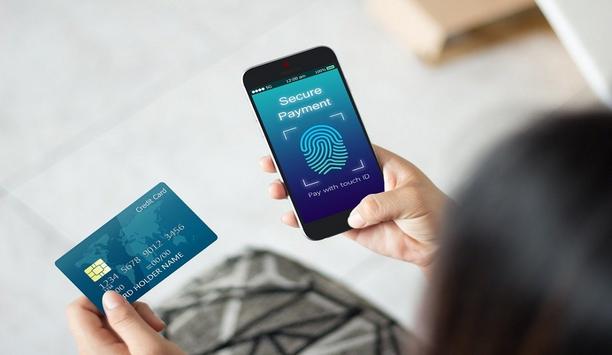Network cameras - Expert commentary
Nowadays the Internet of Things has become an integral part of business around the world. The enhanced functionality made possible by the Internet of Things (IoT) and associated technologies are responsible for many of the major changes seen across society today. Video surveillance Video surveillance is one area that experiences substantial evolution driven by IoT technology. The intelligent monitors and sensors of the IoT combined with emerging high-speed network solutions promise to improve...
The growing mobile ownership rate, the emergence of more user-friendly banking apps, the tech-native younger generation, and, of late, the pandemic-induced shift to online, all create a fertile ground for mobile banking. Unfortunately, the acceleration of banking app adoption today goes hand in hand with the increase of targeted security threats. In 2022, a month wouldn’t go by without a headline-making mobile banking attack or incident that resulted in stolen funds and sensitive personal...
Enable third-party application system quickly to incorporate the visual data, as part of their solutions. Each and every user has a unique set of platforms that they need to efficiently run their business. In the security and surveillance field, increasing interest in visual sensor networks drives the development of multi-camera applications in private and public areas. Thus, middleware is needed to facilitate video data sharing connections between software platforms. It works like video plumbi...
It’s clear that despite recent layoffs in the tech industry and general unease about the economy, there are still significant gaps in the number of jobs available and the amount of workers available to fill them. According to the Labour Department, there are 5.5 million more job openings than workers available. The physical security industry is not immune to these shortages. Last fall, Allied Universal reported being unable to fill thousands of open roles nationally while other smaller s...
Identity management is an important element of both data security and physical security in an organisation. But all ID management solutions are not the same—especially when it comes to security. There are no uniform security standards for the industry, and many off-the-shelf systems fall short when it comes to data protection. To protect people, property, and data, make sure you select a system that maximises security at every stage. What is identity management? Identity management&mdas...
Nowadays to save costs by making full use of old devices while upgrading the old security projects, many integrators or installers prefer to use video management software to manage multiple brands of video devices (such as IP cameras, and NVR), instead of only one single brand. So that they could have more flexible choices to earn profits while saving costs. Multi-brands video device management On other hand, with market segmentation and specialisation, instead of managing the video by themsel...
The banking market continues to evolve through the growing use of digital and mobile devices, as more branch operations aim to enhance convenience and service for the customer. These advancements also create more significant opportunities for fraud and loss. Together, these two trends come full circle: Increasingly sophisticated fraud techniques require organisations to pursue new approaches to preventing and detecting such activities. Digital transformation But before we lead down that path,...
One of the biggest security trends in the last two years has been the adoption of cloud-based services, spearheaded mainly by an increasing number of video surveillance-as-a-service (VSaaS) offerings. VSaaS market value According to MarketsandMarkets Research, the global VSaaS market value is expected to reach $6.2 billion by 2026. This growth is propelled by demand for remote access video services, less local hardware to maintain, new internet-enabled devices, and a lower total cost of owners...
In the UK there is a new data reform act working its way through the legislative process. As the law changes, the market changes – so this year will see many companies trying to read the tea leaves and adapt their offerings to take advantage of the emerging changes. The security marketplace is, apparently, constrained by the need for great privacy – it appears to be a zero-sum game – you can have privacy, or you can have security, you can’t have both. In the second half...
Enterprise security directors often count on an integration firm to handle jobs ranging from day-to-day activities to long-term, technology-laden projects. However, before entering a relationship, you must know what's reasonable to expect from an integrator – as not all are created equal. Here are some tips that might make the selection process easier. Completing comprehensive classwork An integrator's experience working in an enterprise environment is an obvious consideration. Ideally...
Integrators need to be well versed in Total Cost of Ownership (TCO), when discussing video surveillance options with their customers. Business leaders are looking for the best, most economical technology that will address their security needs, and they also want to avoid being blind-sided by unplanned technology operations and service costs. While most folks understand that the initial cost of a video surveillance system is not the same as the total cost of ownership, many might be surprised to...
Back in 1890, Samuel Warren and Louis Brandeis published a ground-breaking article in the Harvard Law review called ‘The Right to Privacy’. To this day, it is regarded as one of the most influential essays in the history of American law and is widely regarded as the first publication in the United States of America to advocate a right to privacy, articulating that right primarily as a ‘right to be let alone’. In this essay, the authors questioned whether the arrival of p...
Many people, quite correctly, point to Salesforce.com—which launched in February of 2000—as the first example of cloud computing. In the years following, the term ‘cloud’ became so popular and was applied to so many products and service offerings, that it became almost meaningless. The result was cloud confusion in the business world and in the media. In one stark example from 2008, Oracle CEO Larry Ellison described news stories about cloud as, ‘complete gibberis...
Currently and unfortunately, there is no such thing as Cloud Police. If there were, two-thirds or more of the companies using ‘cloud’ in their advertising and documentation would be in Cloud Jail for seriously misusing the word in their marketing. The term ‘Cloud’ is over-used and misused—sometimes intentionally and knowingly, but also often in ignorance. It’s just a word—but in the context of cloud computing technology, it does have a specific meaning...
The world around us is full of technological innovation. Smart locks are commonplace in our homes and control access to buildings, but when it comes to industrial locking and access control for equipment cabinetry, options can seem limited. Equally, there’s not enough accessible information to act as a guide. The development of new technologies and cabinet capabilities feels as though it is being held back. But that doesn’t have to be the case. Common problems are seen across the l...
In the era of the ‘Great Resignation’, it may seem counterintuitive to say that people will power business security in 2022. However, a convergence of challenges over the past few years has led to an undeniable trend in the security industry: With more technology comes the need for more people to monitor, analyse and leverage the data that technology produces. Always-on approach to security Since businesses were forced into lockdown two years ago, we’ve seen technology adopti...
Every day, millions of people worldwide use their personal credentials to prove their identity and access a range of services, from databases in their workplace to the banking app on their smartphone. But while this ensures only authorised people have access to certain systems, the use of this personal data opens users up to cyber risks, primarily in the form of identity theft. On Identity Management Day, Source Security spoke to seven IT and cybersecurity experts to discuss their experiences a...
Most individuals have strong opinions about what is more essential to our civilisation: personal privacy or security. After more than a decade of technology enabling greater and greater amounts of Personally Identifiable Information (PII) and data harvesting, now the pendulum is swinging towards a society that places more emphasis on individual rights and privacies. This shift is manifesting in a variety of ways, quickly changing the technology, security and cyber security landscapes, and requi...
Most of the assumptions you’ve made about gunshot detection could be wrong. To those security professionals who stay on top of their homework, this is probably not true, but the ‘you’ in this context is directed to the collective security industry reader that, when looking into indoor gunshot detection products, sees terms like concussive force, percussion, or shockwave and wonders if these are important differentiators – or something the marketing department decided woul...
As we navigate the new normal, the power of choice and flexibility continues to take centre stage. We’ve grown accustomed to the choice to work from home or virtually anywhere and the flexibility to have everything delivered (sometimes even right into your fridge!). Seamless access control With this, we are seeing heightened demand for seamless access control through smart locks and mobile credentials. This powerful combination creates exciting new opportunities to meet resident demand f...
As a result of COVID-19, artificial intelligence (AI) has become table stakes for factories. Google’s 2021 Cloud Manufacturing Report found that 76% of manufacturing executives increased their adoption of disruptive technologies, including AI, during the pandemic. AI-based facial recognition technology AI has long been used in the sector to monitor the pace of work and anticipate machine failures, a trend that is expected to continue this year as factories look to optimise operations. Ho...
Corporate global security operations centres (GSOCs) bear the responsibility for protecting C-suite executives from physical and reputational harm amid the social upheaval, extreme weather events, and escalating cyber threats. That mission, daunting as it is, becomes more difficult when GSOCs lack the data necessary for conducting a comprehensive threat assessment. Threat intelligence Unfortunately, many centres never move past basic threat intelligence which focuses on scenario-driven queries...
There is no denying that the COVID-19 pandemic has radically changed the way we work. In May 2021, 31% of the countries workforce was still working remotely, with 71% of businesses in professional, scientific, and technical industries remote-working. Work patterns shifting Although the conversation often focuses on office workers, the COVID-19 pandemic has impacted the way many other, non-office sectors operate. In the security industry, since the introduction of lockdowns and social distancin...
Cloud-based applications and platforms revolutionise supply chain management, helping stakeholders scale operations from small businesses to complex enterprises. Cloud supply chain solutions are showing significant increases in implementation – so much so the sheer number of organisations with a cloud solution outpace or far outnumbers the ones that don't. But there is one area that has still not made the switch to the cloud, most often the security department. But the advent of using vid...
They say nothing stays the same for long, and this has never been truer than in today’s world of technology and innovation. The 21st century has seen rapid changes and every day brings a new update in one of the many segments of technology. Technology is evolving at such a rapid rate, due to a phenomenon dubbed accelerating change. Each new improvement is now a stepping stone, enabling stronger and better generations of technology, at faster speeds. Accelerating change evolving across all...
Businesses large and small rely on their CCTV systems to deter intruders and provide recorded evidence of security incidents. Overtime, CCTV has evolved to offer real-time intrusion detection and monitoring, and businesses now expect easy, secure and anytime access to cameras, and data. For that, they need connected CCTV systems. These modern installations can benefit from cellular connectivity, helping businesses protect their sites, while also supporting enhanced capabilities for CCTV to deliv...
In the new era of work, our relationship with the workplace is defined by flexibility and mobility. Employees are working across the home, office, and blended spaces more than ever before, as well as working varied hours to suit the modern work schedule. This new hybrid workforce model holds the potential for more diverse talent and better productivity, but it also comes with its challenges – one being how to ensure security, health, and safety in the workplace. Strong a...
Technology has certainly become an intrinsic part of our day-to-day lives, from the retail industry, to food and beverage outlets, and even within the health and fitness industry. It’s all around us, in varying formats, making processes more efficient. It has refined some of our older approaches, and in the hospitality industry, this is certainly true. Technological advances are leading the way forward for the future of hotels, and with the sector now free from COVID-19 restrictions, venu...
Security is a critical requirement for all organisations. Getting security right involves the correct mix of people, processes and technology working together. However, many enterprise companies don’t look at the full mix that encompasses information security, and instead split their physical security and business continuity teams away from their IT security departments. According to research by ASIS, around half (52 per cent) of companies have converged two or three out of their physica...
In the field of access control, face recognition has come a long way. Once considered too slow to authenticate people's identities and credentials in high traffic conditions, face recognition technology has evolved to become one of the quickest, most effective access control identity authentication solutions across all industries. Advancements in artificial intelligence and advanced neural network (ANN) technology from industry leaders like Intel have improved the accuracy and efficiency of fa...
Palm vein recognition
DownloadThe key to unlocking K12 school safety grants
DownloadSelecting the right network video recorder (NVR) for any vertical market
DownloadPhysical access control
DownloadCybersecurity for enterprise: The essential guide to protecting your business
Download


































